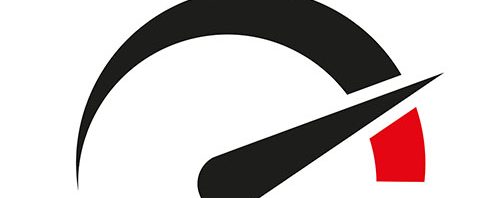Did you know more than 200 factors determine your overall website ranking — both on- and off-site? Business owners can only control the on-site factors, which is why many entrepreneurs focus on fresh content and SEO. However, website performance is also a controlled factor, so don’t ignore it. Front-end optimization improves user experience and increases your site’s speed, which in turn increases your overall rankings, conversions, and profit.
Website Speed Affects Your Rankings
Since 2010, Google has factored website speed into its search rankings. While the company notes that site performance isn’t as important as page relevance, it is still a factor. Because of this, every online entrepreneur should be concerned with their website’s overall speed and performance. A study from Backlinko determined that domains ranked in the first position of the search results were approximately 13 percent faster than those ranking in 10th position. So if you want to improve your site’s search engine page results (SERP) ranking, you need to increase your site speed.
Website Speed Affects Your Bounce Rates, Conversions, and Revenue
According to surveys completed by Akamai and Gomez.com, almost half of all internet users expect a website’s load time to be faster than two seconds, and many completely abandon a website that takes longer than three seconds to load. This results in higher bounce rates, as well as lower conversion rates and revenue. Statistics from Hubpages show just how important website speed is to your bottom line. According to them, a one-second delay results in a 7 percent reduction in conversions. So if your website makes $100,000 per day, increasing your website’s speed by one second could increase your revenue by $7,000 per day. This is because your website’s speed and performance has an effect on your customer’s happiness.
Testing Your Website Speed
Before you can improve your website’s speed and performance, you need to pinpoint areas that need improvement. Running a simple website speed test helps you:
- Find fonts, scripts, and plug-ins causing delays in load times
- Pinpoint large images on your site that are causing bottlenecks
- Determine if you have any render-blocking CSS or JavaScript
- Check your site’s rendering speed in different browsers
- Analyze your site’s total load times, number of requests, and page sizes
- Measure your content delivery network
- Verify that all of your website’s assets are loading properly
Testing your website’s speed is simple. Just use one of these speed tests:
- KeyCDN
- Pingdom
Tips to Improve Your Website’s Speed Front-end optimization or website optimization is the process of tweaking your website to decrease load time and improve speed. To do this, you’ll need to make some simple changes and monitor your process going forward.
Minimize your HTTP requests
According to Yahoo, 80 percent of a web page’s loading time involves downloading the various pieces of the page itself. HTTP requests are made for each element individually, so reducing your on-page components reduces your HTTP requests, speeding up your load time. To minimize your HTTP requests:
- Limit the number of elements used on your web pages
- When possible, use CSS instead of uploading images
- Combine numerous style sheets into one
- Reduce the number of scripts your site is running, and put those scripts at the bottom of the page
Reduce server response time
Ideally, your server response time should be 200 milliseconds. However, server response times vary depending on how many websites share the server. To lower your server response time, start by reviewing your hosting package. Free and shared hosting packages typically have longer server response times because other websites are sharing server space. To reduce your server response time, consider upgrading to virtual private server hosting or dedicated hosting.
Optimize images
Optimizing images typically yields big results because images often account for the most downloaded bytes on a page, according to Google. Before using an image, consider its type, size, number of pixels, and resolution. If you want to use an image that doesn’t meet your requirements, use a convert tool, such as ImageMagick, to optimize your image.
Optimize CSS delivery
When CSS is poorly delivered, it drastically slows down your website. To optimize your CSS delivery:
- Combine any CSS scripts you’re able to combine • Use a CSS compressor to reduce the amount of data downloaded by each user
- Use a critical CSS generator to extract all necessary pieces of your CSS script
- Place the extracted snippets of script in-line within your site’s HTML
- Set the rest of your compressed script to defer load
Move to a Cloud Provider
If you’re like most online entrepreneurs, you aren’t an information technology expert. Consider cloud computing for your business to optimize your website’s performance. When you use cloud computing, the software company you choose manages the technical aspects of your website, including its speed and performance. Both Google Compute and Amazon AWS offer 12-month free trials to get you started, and Microsoft Azure offers a 30-day free trial that includes a sizable credit to let you explore the more customizable options.
